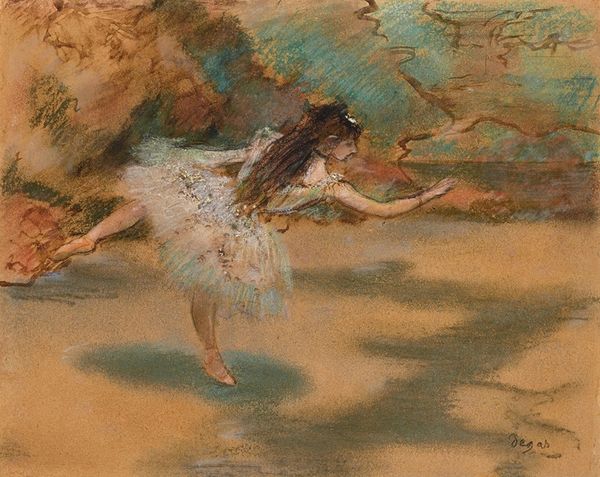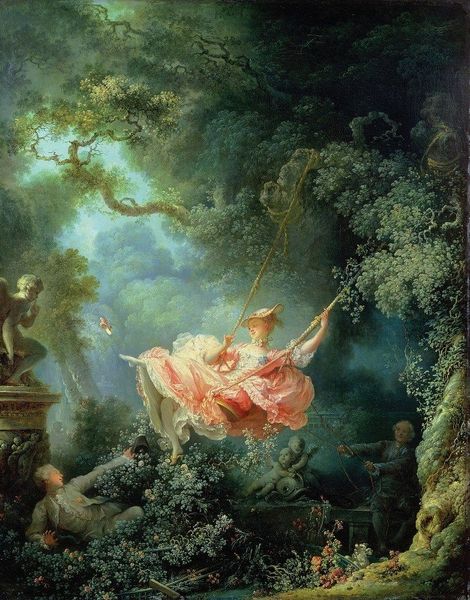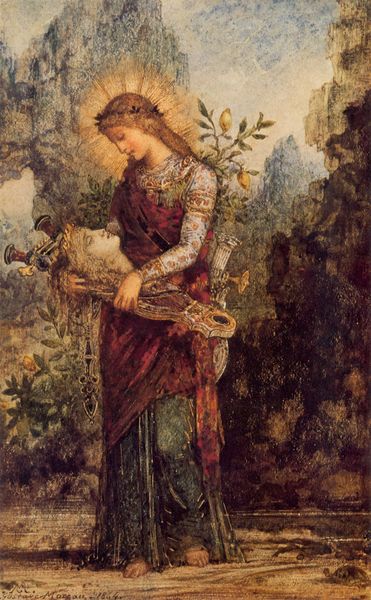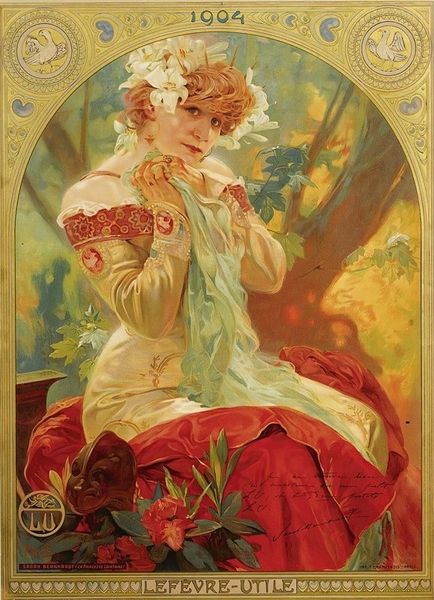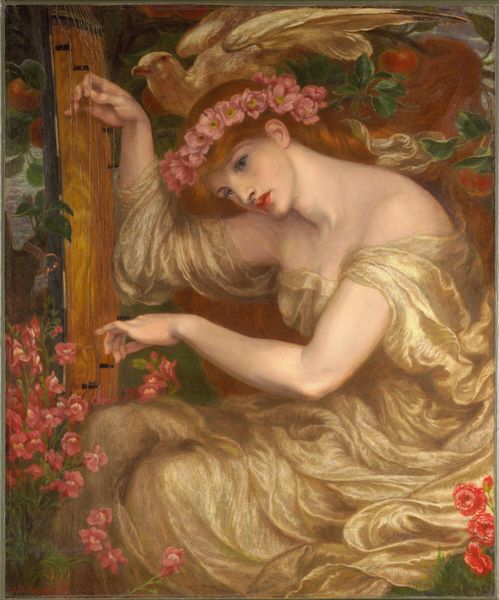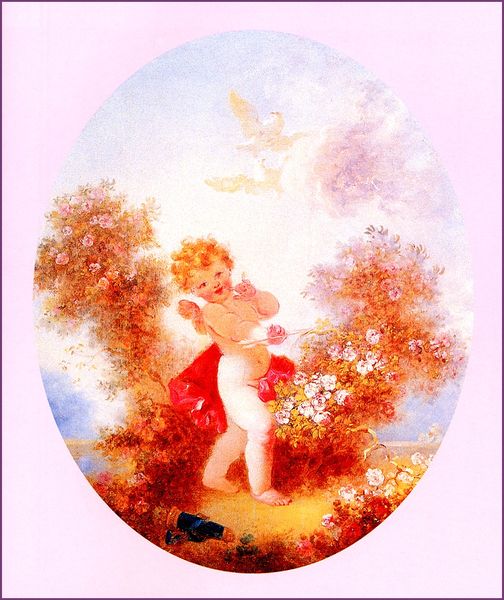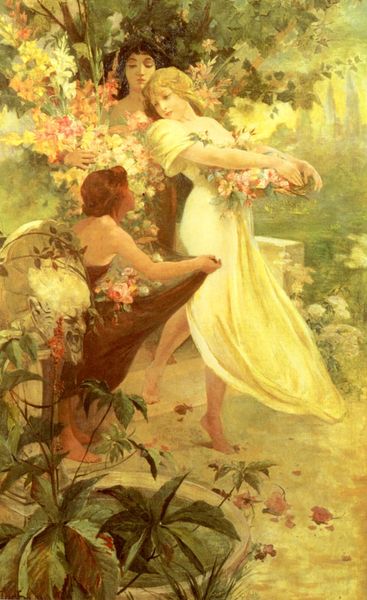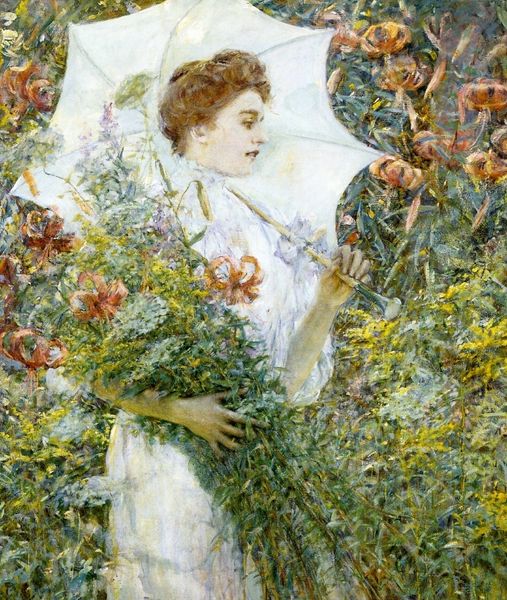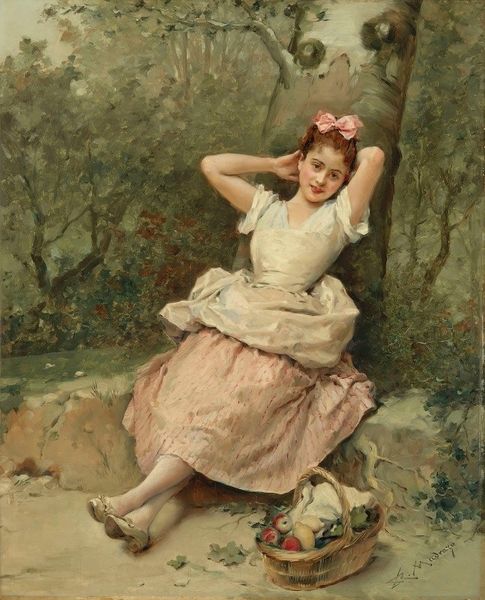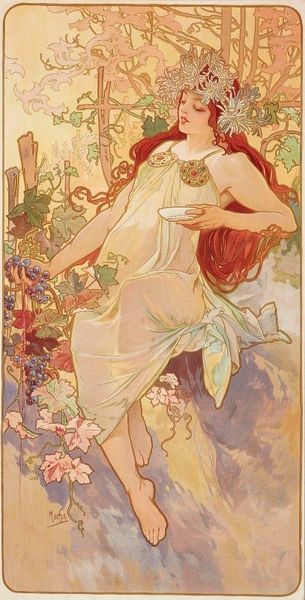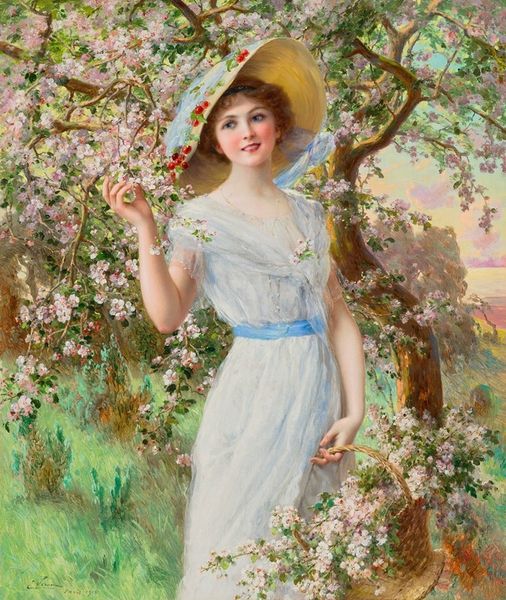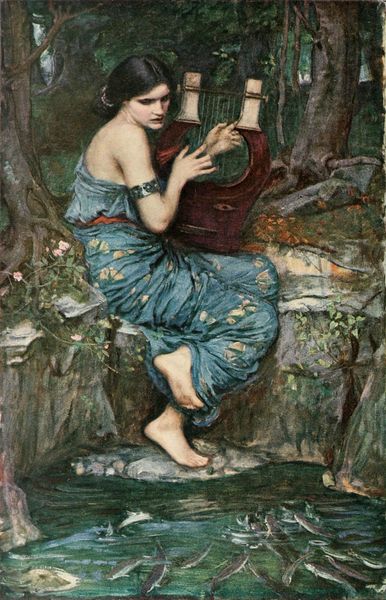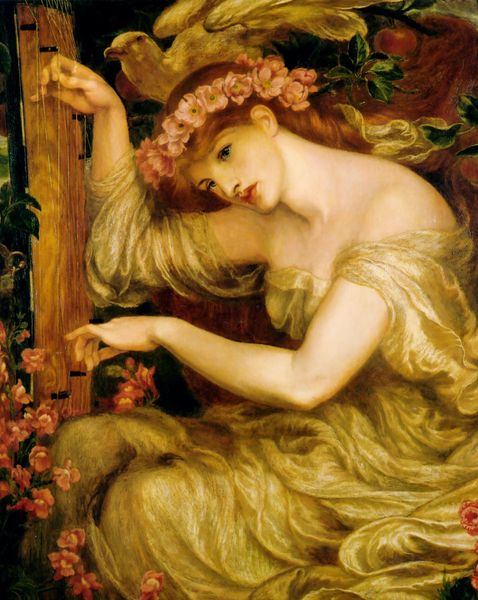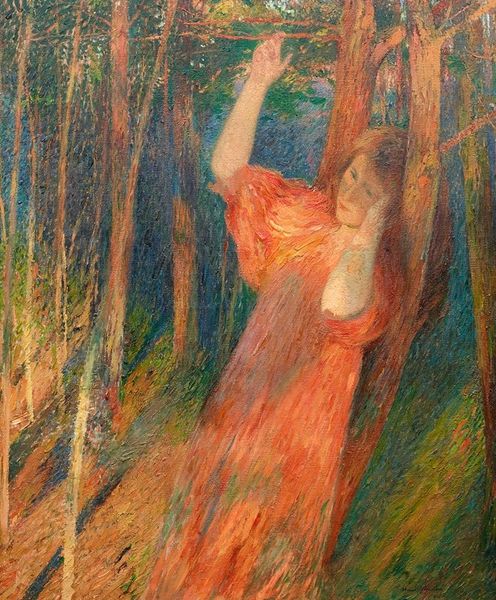
painting, watercolor
#
painting
#
landscape
#
fantasy-art
#
figuration
#
watercolor
#
mythology
#
symbolism
#
academic-art
#
nude
#
watercolor
Copyright: Public domain
Curator: Here we have Charles M. Russell's "Wood Nymph," created around 1898. Russell, known for his depictions of the American West, ventures here into the realm of fantasy and mythology with delicate watercolors. Editor: My first thought is it’s ethereal, dreamlike. The soft colors, the fairy-like figure – it feels incredibly romantic. Curator: Exactly. The piece fits squarely within a Symbolist framework and the conventions of academic art. It invites reflection on how the female form is utilized within certain established and deeply rooted aesthetic traditions to project romantic notions about women and nature. What roles does it afford or prescribe? Editor: Considering his usual subjects, the choice of watercolor is intriguing. The fragility of the medium underscores the nymph's perceived delicate nature and the ephemerality of the encounter. I'm curious about Russell’s decision to employ it; did he consider other media? What was available? Was this a study of light as material? Curator: These are relevant inquiries. The medium undoubtedly contributes to its gentle, dreamlike quality. The woodland setting too provides important visual and thematic components, particularly in terms of gendered roles, and perhaps some questions about their sustainability. Editor: I find it compelling that the tree on which the nymph sits is dead. I wonder if this suggests not only her dominion over, but maybe dependence on a product of a forest and of industrial needs; this tree has been harvested but isn't yet processed for consumption. Curator: An incisive point! The use of a dead tree introduces a melancholic, perhaps cautionary element, especially when contextualized against rapid industrialization. Editor: Precisely. It almost makes the nymph into an allegory. One might ask who or what will rescue her – or even if we should want to rescue a romanticized object of fantasy like this. What labor lies beneath the nymph’s aesthetic? How can such themes influence our contemporary awareness? Curator: Those questions are essential to understanding the continuing relevance of Russell's work. It also stimulates ideas around gender, consumerism, and the environment that must be investigated to realize social progress. Editor: Indeed, looking at it this way gives “Wood Nymph” a resonance that transcends its immediate appeal. It moves past its own constructed fey image.
